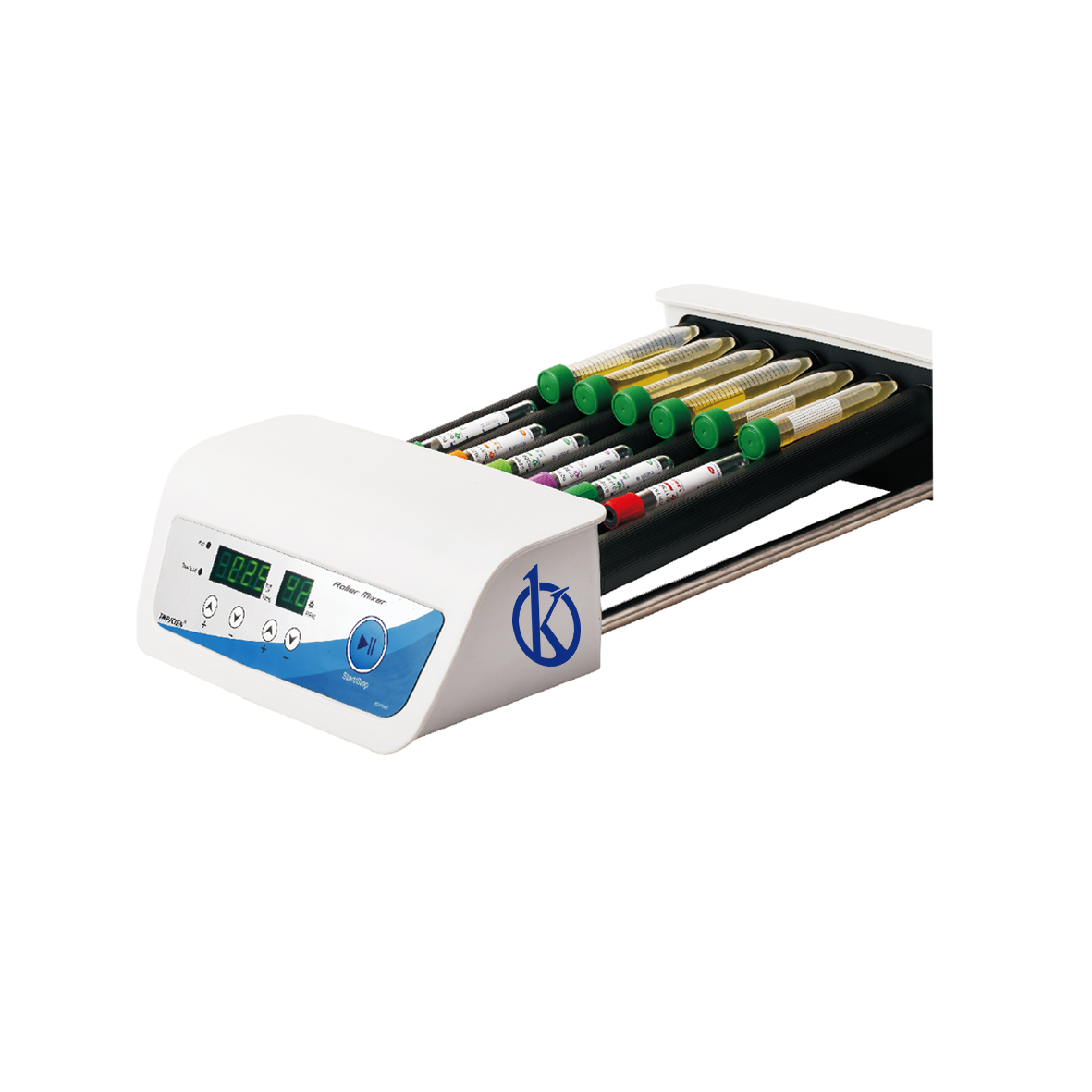Laboratory agitators are electromechanical devices commonly used in laboratories to homogeneously mix solutions and suspensions. These are usually made up of a plate, which is moved by an electric motor. The sample to be mixed is placed in a container, which can be a beaker, tube or flask, which is positioned on a vibrating surface.
These equipment are used in the manufacture of chemicals, cosmetics, food, coatings among others. They are equipment that easily adapts to small spaces and are easy to move from one place to another.
Types of laboratory shakers
They are used for shaking test tubes or similar in laboratories. This type of mixers consists of an electric motor with the drive shaft oriented vertically and attached to a piece of rubber or rubber in the shape of a cup, slightly eccentric, where the tube to be shaken is supported. They also have suction cups at their base to avoid displacement. The speed of agitation can be adjusted. As the engine rotates, the rubber part quickly oscillates in a circular motion, making it easier to shake the tube. There are different models of vortex stirrers, for example, for a continuous speed or to work only when a weak pressure is applied to the rubber.
Orbital shakers
The orbital shaker is equipment used in laboratories, clinics and others; for mixing, homogenizing and / or preparation of combinations of substances. There is a wide variety of presentations of these devices and they mostly depend on their size and whether their speed is fixed or adjustable. This equipment consists of a time control which can be adjusted as needed, likewise some have a speed control which can be adjusted as required. At the top is a platform where the sample holders are placed, which has a non-slip material.
Magnetic stirrers
They are the most used in laboratories and in turn the safest, because they use shaker bars that can be disinfected. This type of mixer consists of a plate with a magneto or a series of electro magnets, arranged in a circular shape at the bottom, which create a rotating magnetic field that acts by an electric motor commanded by an electronic device.
The stirring (magnetic) bar, normally coated with an inert film such as Teflon, is placed inside the container and the vessel or container is placed on top of the plate. Once running, the shaker bar begins to rotate, propelled by the electric motor that moves the magnets. The size and shape of the magnetic bar determine the effectiveness of the stirring process, considering a constant speed. Some models of magnetic stirrers also have a heating system – some reach up to 300ºC – to heat the samples at the same time they are stirred.
In Kalstein We are MANUFACTURERS and we offer you excellent laboratory stirrers at the best PRICES. That’s why we invite you to take a look: HERE

